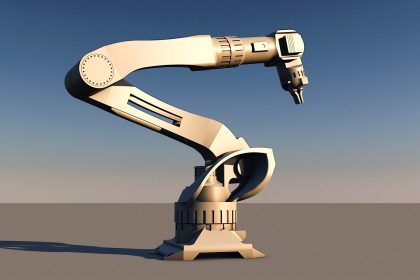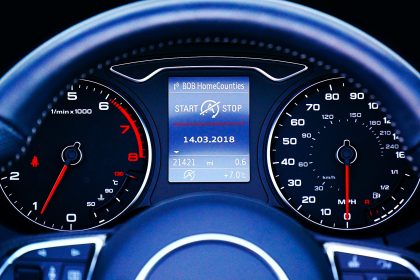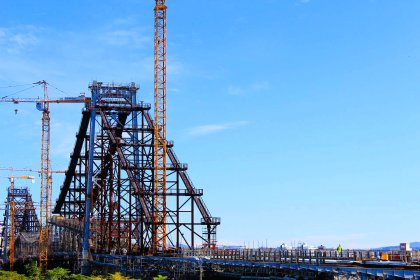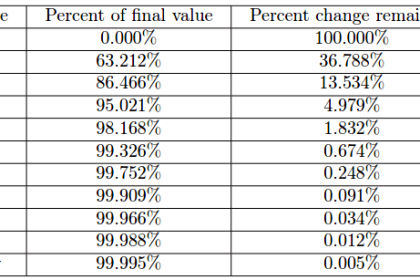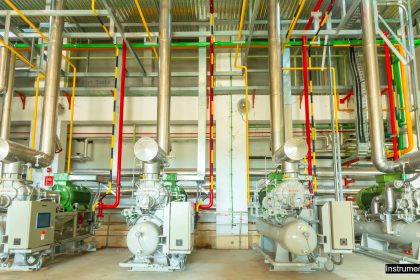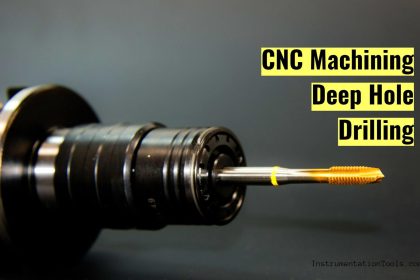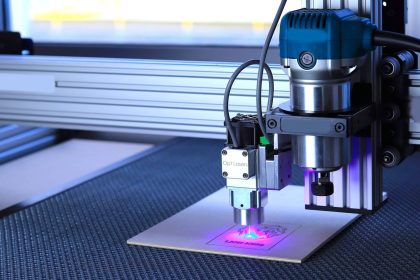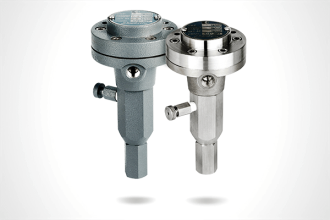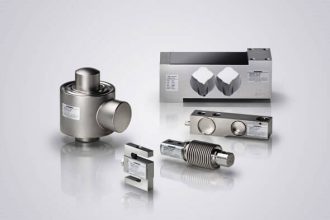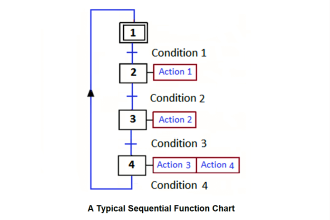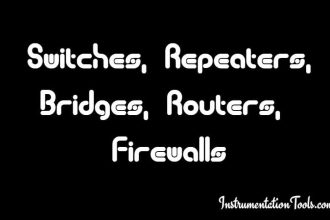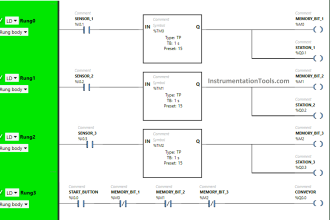An industrial automation system comprises machines, devices, and equipment which are controlled or moved by some external force. This force is responsible for running the whole plant smoothly.
Generally, the two of the most used forces are electrical and pneumatic. This means, for example, a PLC will turn on a valve. But then, for the valve to be opened or closed after it has been powered on by the PLC, a mechanical movement inside its structure will be required. This movement is provided either electrically or pneumatically. So, both these systems are responsible for moving a load.
What is an electrical system?
An electrical system is one that converts electrical energy into mechanical energy for moving a load.
For example, consider a simple motor. A motor is a device that takes electricity as input and when taken, its magnetic field gets excited and generates rotation.
This means the final load which is connected to the motor, like a conveyor, will not move if there is no change in the electricity supply. Either the supply will turn on or off, accordingly the motor will turn on or off.
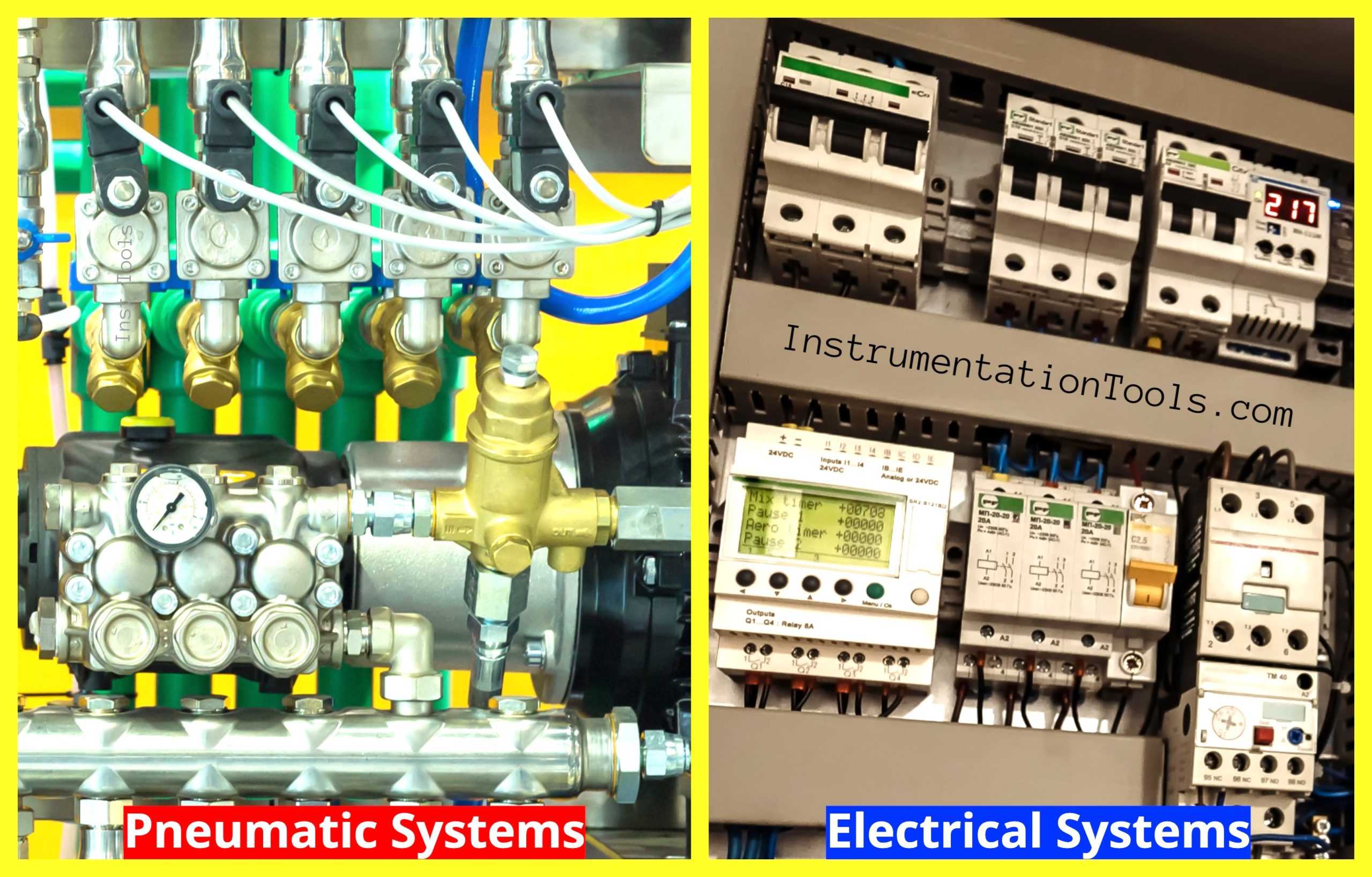
What is a pneumatic system?
A pneumatic system is one that converts air energy into mechanical energy for moving a load.
Air, when compressed, has a very high pressure. When such high-pressure air is applied to a stationary load, it moves due to this force applied.
When the air supply is removed, the device will retreat back to its original position (in case of single-acting type) or stay in the last held position (in case of double-acting type). This means that the device or load will move only when air is acted upon it.
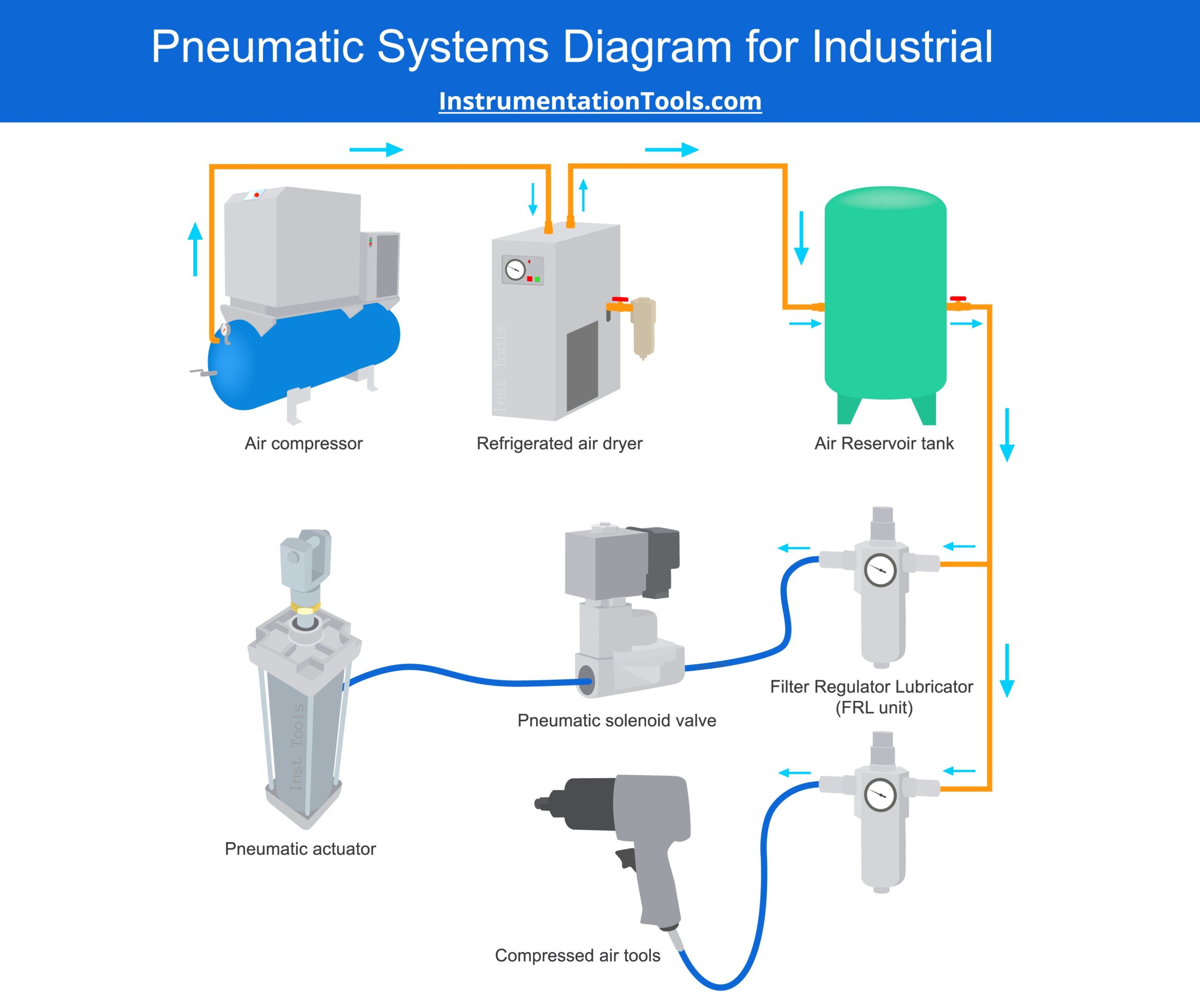
Electrical Systems vs. Pneumatic Systems
Let’s learn the differences between electrical and pneumatic systems here.
- An electrical system takes electrical energy as the input, whereas a pneumatic system takes the air energy as the input for moving the load.
- Pneumatic systems are really fast to operate and also provide a higher force, as compared to an electrical system. This is because as current builds up, motion builds up too. Also, the speed and force of the pneumatic system are easily adjustable and controllable.
- An electrical system has more safety hazards than a pneumatic system. You have to take care of precautions like accidental touch, electrical noise, or proper power supply voltage; regardless of which untoward accidents can happen. All these are not required in a pneumatic system and are comparatively safer to operate.
- Electrical systems are more sensitive to environmental factors like temperature, humidity, dust, dirt etc. as compared to a pneumatic system.
- Cost-wise, electrical systems are more heavy in pockets than pneumatic systems. A pneumatic system can overall reduce your project cost and lifetime running cost in a greater way than an electrical system.
- Electricity is a very costly energy to buy, whereas air is available all around you for free of cost. So, in terms of resource availability, electrical systems need greater care and consideration as compared to pneumatic systems.
- In terms of precision and accuracy, the electrical system is the best. This is because the electronic devices or electrical devices inside it are more prone to control signals, and calculations as compared to a pneumatic system.
- Electrical systems majorly face issues like wire breaks, electrical device failure, overheating, electromagnetic noise, and short-circuits; while pneumatic systems majorly face issues like air leakages, air friction, and dust and dirt in the air.
If you liked this article, then please subscribe to our YouTube Channel for Instrumentation, Electrical, PLC, and SCADA video tutorials.
You can also follow us on Facebook and Twitter to receive daily updates.
Read Next:
- Pneumatic Instrumentation
- Instrumentation and Control Quiz
- Pneumatic Systems Objective Questions
- Pneumatic Load cell Objective Questions
- Advantages of Pneumatic Instruments
